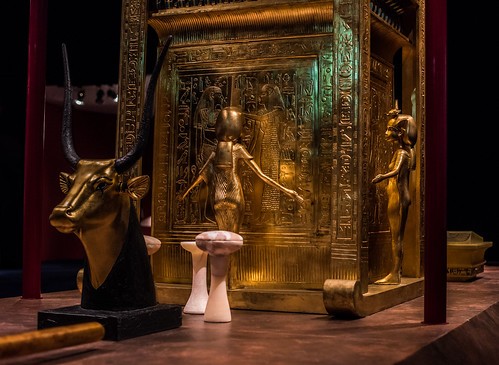The ancient Egyptians had a profound reverence for the afterlife, and their funerary practices were a testament to this belief. One of the most fascinating aspects of their burial rituals was the use of canopic shrines – elaborate, gilded structures that housed the preserved internal organs of the deceased. These shrines not only served a practical purpose in the mummification process, but they also held deep symbolic and spiritual significance.
In this blog post, we will delve into the world of ancient Egyptian canopic shrines, exploring the intricate details of their construction, the deities that guarded them, and the role they played in the journey to the afterlife. Join us as we uncover the fascinating history and cultural significance of these remarkable artifacts from one of the most captivating civilizations in human history.
The Canopic Shrine of King Tutankhamun
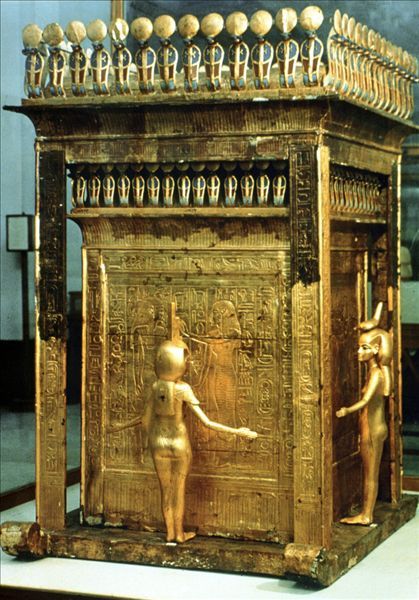
One of the most well-known and exquisite examples of an ancient Egyptian canopic shrine is the one discovered in the tomb of King Tutankhamun. This imposing and elaborately gilded structure was the final resting place for the king’s internal organs, carefully preserved and protected for his journey to the afterlife.
At the center of the shrine stood an alabaster chest, within which were four miniature canopic coffins. These coffins contained the embalmed liver, lungs, stomach, and intestines of the king, each guarded by one of the four female deities: Isis, Nephthys, Neith, and Serket.
The outer canopy of the shrine was a stunning work of art, featuring a gilded wooden structure with four square corner posts supporting a projecting cavetto cornice, topped by a frieze of rearing cobras with solar disks. The sides of the shrine were adorned with scenes of the protective deities, incised in relief, adding to the overall grandeur and significance of the piece.
The Role of the Canopic Deities
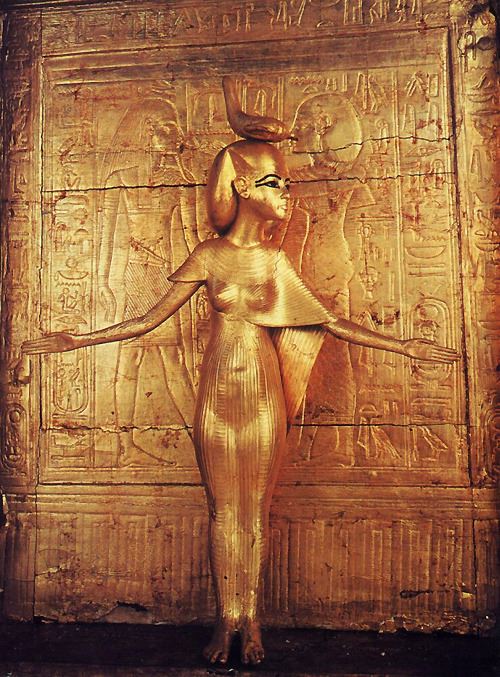
The four female deities tasked with guarding the canopic jars and their contents were Isis, Nephthys, Neith, and Serket. Each of these goddesses played a crucial role in the protection and preservation of the king’s vital organs, ensuring their safe passage to the afterlife.
Isis, the goddess of motherhood and fertility, was believed to have the power to resurrect the dead. Nephthys, the goddess of mourning and protection, was responsible for guarding the northern side of the shrine. Neith, the goddess of war and weaving, protected the western side, while Serket, the goddess of scorpions and healing, guarded the eastern side.
The presence of these deities on the canopic shrine was not merely decorative; it was a testament to the ancient Egyptians’ belief in the interconnectedness of the physical and spiritual realms. By invoking the power and protection of these goddesses, the Egyptians ensured that the king’s vital organs would be safeguarded on his journey to the afterlife.
The Significance of Mummification and Canopic Jars
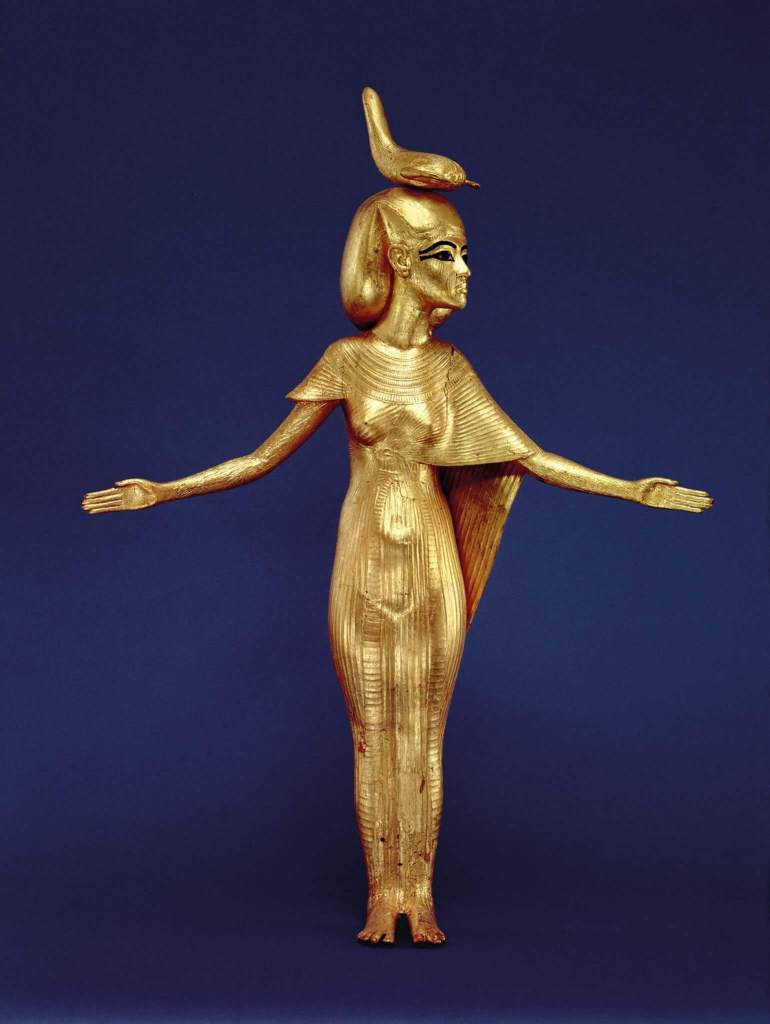
The process of mummification was a crucial step in the ancient Egyptian funerary rites, as it was believed to preserve the physical body and prepare it for the afterlife. During this process, the internal organs were removed and placed in canopic jars, which were then housed within the canopic shrine.
The four canopic jars, each representing one of the four deities, were used to store the liver, lungs, stomach, and intestines of the deceased. The heart, however, was left within the body, as the ancient Egyptians believed it to be the seat of the soul and essential for the journey to the afterlife.
The preservation of these vital organs was not just a practical matter; it held deep symbolic and spiritual significance. The ancient Egyptians believed that the deceased would need these organs in the afterlife, and the canopic jars ensured their safe passage to the next world.
The Healing Power of Serket
Among the four deities guarding the canopic shrine, the goddess Serket holds a particularly fascinating role. Represented with a scorpion on her head, Serket was the goddess of healing and protection, with the power to both harm and heal.
In ancient Egyptian medical practice, Serket was invoked to help treat the bites of poisonous creatures, such as scorpions. The ancient Egyptians believed that by pronouncing magic formulas and identifying themselves with the deity, the healing power of Serket could be harnessed to overcome the deadly effects of these venomous bites.
The association between Serket and the scorpion was not just a symbolic one; it was rooted in the ancient Egyptians’ understanding of the natural world. They recognized that the scorpion, while potentially deadly, also had the ability to heal through its venom, and the goddess Serket embodied this duality of destruction and restoration.
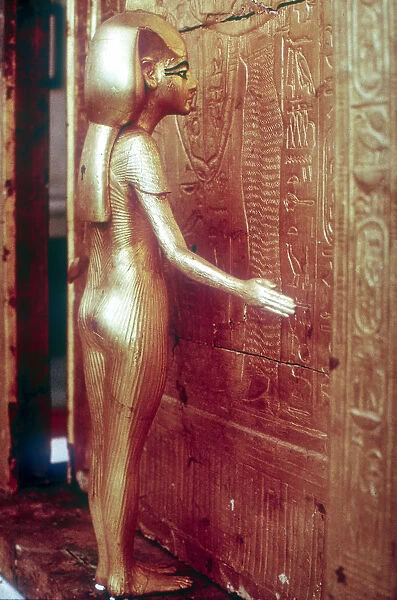
The Canopic Shrine and the Afterlife
The canopic shrine, with its intricate design and the presence of the protective deities, was not just a practical tool for the mummification process; it was a crucial element in the ancient Egyptians’ beliefs about the afterlife.
The ancient Egyptians believed that the deceased would need their vital organs in the afterlife, and the canopic jars ensured that these organs were preserved and protected for the journey to the next world. The canopic shrine, with its gilded splendor and the watchful gaze of the goddesses, represented the reverence and care with which the Egyptians approached the afterlife.
By entrusting the king’s internal organs to the care of these deities, the ancient Egyptians believed that they were ensuring the safe passage of the deceased to the afterlife, where they could continue their existence in the next world.
Conclusion
The canopic shrines of ancient Egypt are a testament to the civilization’s profound reverence for the afterlife and the intricate rituals and beliefs that governed their funerary practices. From the elaborate gilded structures to the symbolic significance of the deities that guarded them, these artifacts offer a glimpse into the ancient Egyptians’ deep-rooted spiritual and cultural beliefs.
As we explore the canopic shrine of King Tutankhamun and the role of the four protective goddesses, we gain a deeper understanding of the ancient Egyptian worldview and the importance they placed on the preservation of the physical and spiritual self. These remarkable artifacts continue to captivate and inspire us, reminding us of the enduring legacy of one of the most fascinating civilizations in human history.
